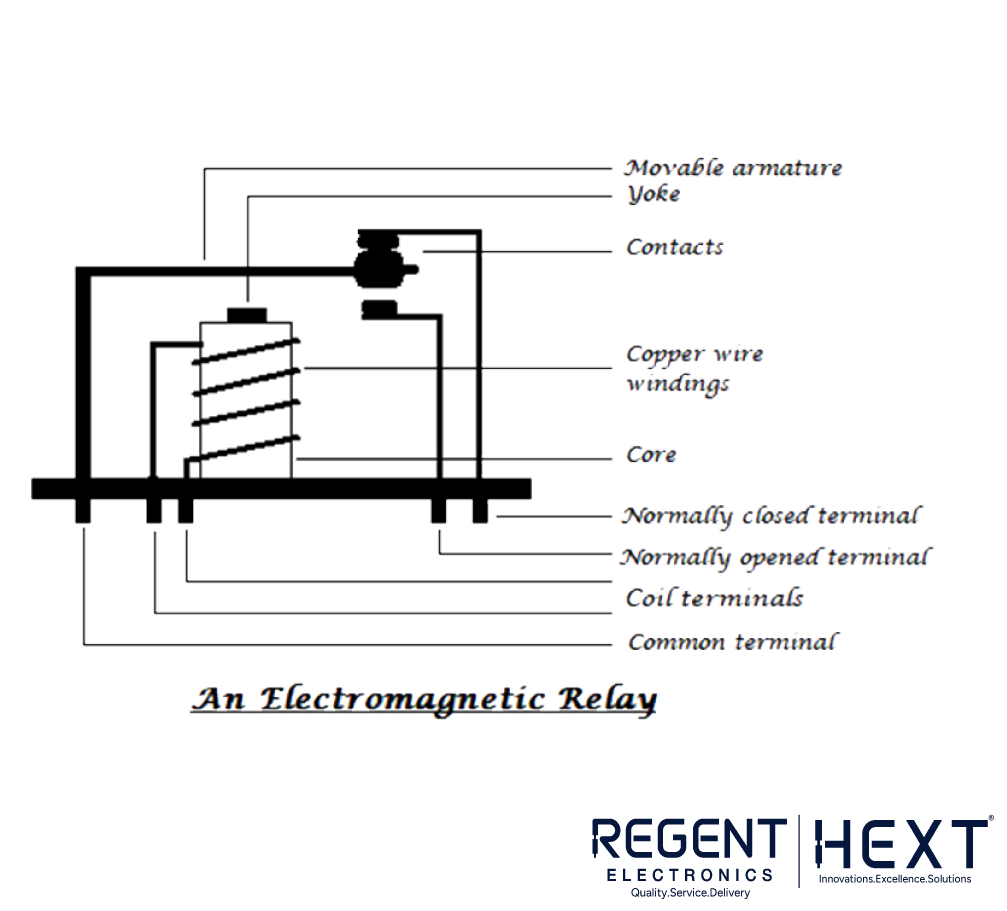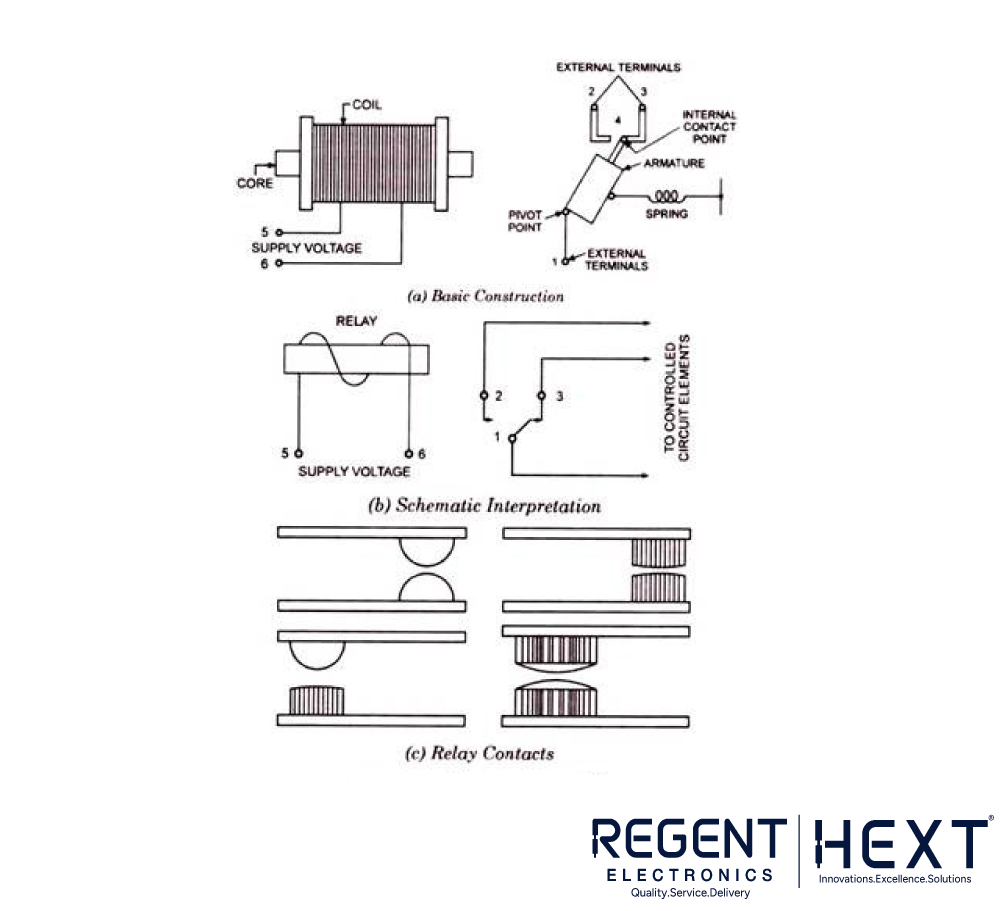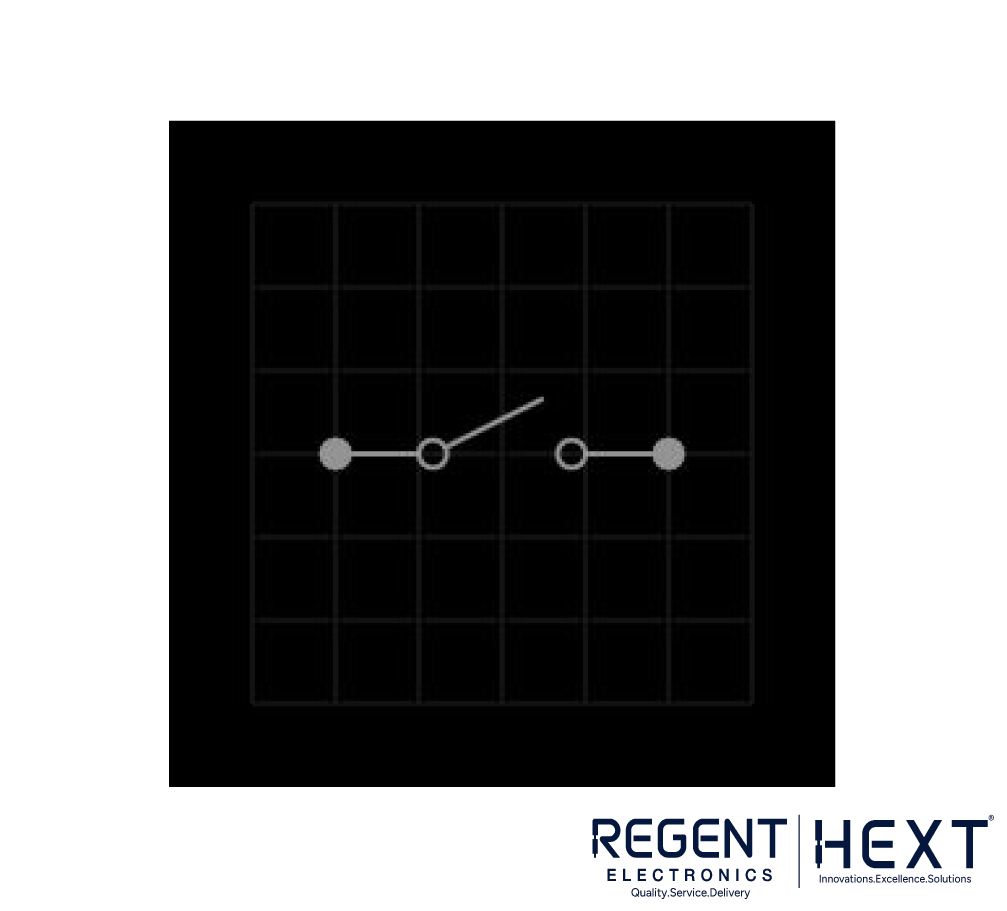
What is a Relay and How Does It Work?
In this blog, we’ll explore everything you need to know about relays, including their construction, working principle, types, pole and throw configurations, advantages, disadvantages, and applications.
What is a Relay?

A relay is an electromechanical switching device that allows a low-power signal to control a high-power circuit. It is widely used in automation, electrical protection, and remote control applications.
Historically, the concept of relays dates back to the early 19th century. Joseph Henry and Edward Davy are credited with early relay designs, while Samuel Morse used a relay in his telegraph system in 1840. Since then, relays have become an essential component in electrical and electronic circuits.
Construction and Working of a Relay

A standard relay consists of several key components:
- Electromagnet – Generates a magnetic field when energized.
- Movable Armature – Acts as a switch that opens or closes the circuit.
- Contacts – Conductive connections that either complete or break the circuit.
- Spring Mechanism – Returns the armature to its original position when the coil is de-energized.
- Frame/Yoke – Supports all the components.
Working Principle

When a voltage is applied to the coil, it generates a magnetic field that pulls the armature, changing the state of the relay contacts. This switching action allows control of higher-power circuits using low-voltage signals. Once the voltage is removed, the spring mechanism returns the armature to its default position.
Types of Relays
Relays can be classified based on their working principle, polarity, and pole-throw combinations.
Based on Operating Principle
- Electromechanical Relay – Uses an electromagnet to operate a mechanical switch.
- Solid-State Relay (SSR) – Uses semiconductor components instead of moving parts, providing faster switching and longer lifespan.
- Electrothermal Relay – Uses a bimetallic strip that bends upon heating to trigger the switch.
- Hybrid Relay – A combination of electromechanical and solid-state relays.
Based on Polarity
- Polarized Relay – Contains a permanent magnet and operates based on the polarity of the input signal.
- Non-Polarized Relay – Functions independently of input signal polarity.
Pole and Throw Configurations




Relays are also categorized based on the number of input and output contacts:
- Single Pole, Single Throw (SPST) – A simple ON/OFF switch.
- Single Pole, Double Throw (SPDT) – One input can be connected to either of two outputs.
- Double Pole, Single Throw (DPST) – Controls two circuits simultaneously.
- Double Pole, Double Throw (DPDT) – Allows two inputs to switch between two different outputs.
Advantages of Relays
- Remote Operation – Controls devices from a distance.
- Isolation – Separates control circuits from high-power circuits.
- Multiple Switching – One relay can control multiple circuits.
- Compatibility – Works with both AC and DC circuits.
- Cost-Effective – An inexpensive solution for automation and protection.
- Durability – Electromechanical relays can withstand harsh conditions.
Disadvantages of Relays
- Mechanical Wear – Contacts degrade over time.
- Slower Switching – Compared to solid-state relays.
- Noise Generation – Mechanical movement can produce noise.
- Power Consumption – Requires a continuous supply for operation.
Applications of Relays
- Automation Systems – Used in industrial automation and home automation systems.
- Electrical Protection – Protects circuits from overloads and faults.
- Traffic Light Controllers – Used in controlling traffic signals.
- Motor Control – Switches high-power motors in industrial machines.
- Telecommunications – Used in switching telephone circuits.
- Power Distribution – Manages high-voltage circuits in substations.
- Medical Equipment – Ensures reliable switching in diagnostic and life-support systems.
Conclusion
Relays are crucial components in modern electrical and electronic systems. Understanding their working principle, types, and applications helps in selecting the right relay for various applications. Whether it’s for industrial automation, circuit protection, or remote switching, relays provide an efficient and cost-effective solution.
